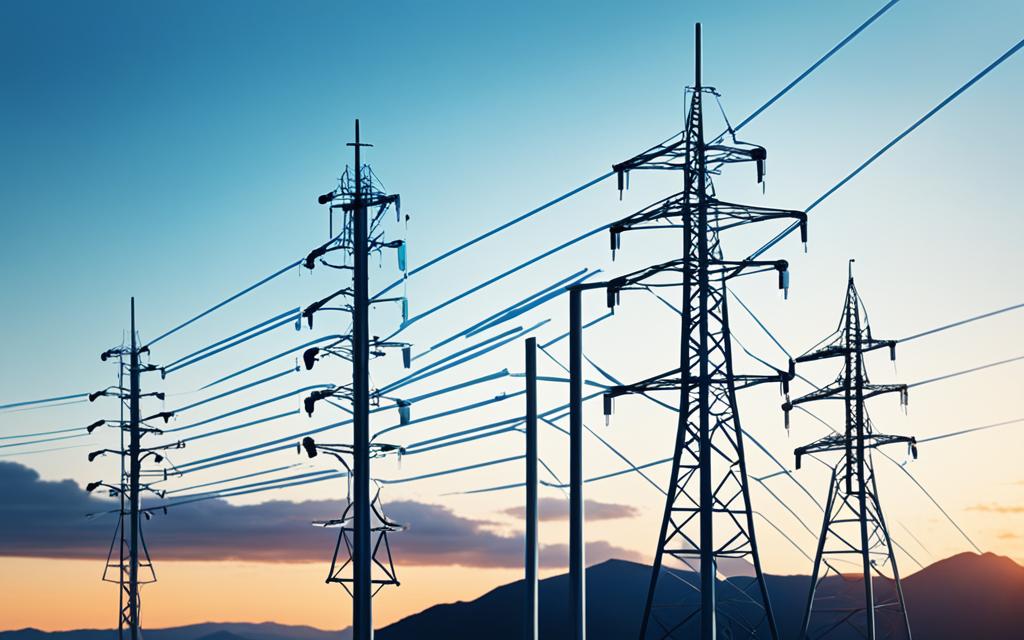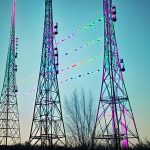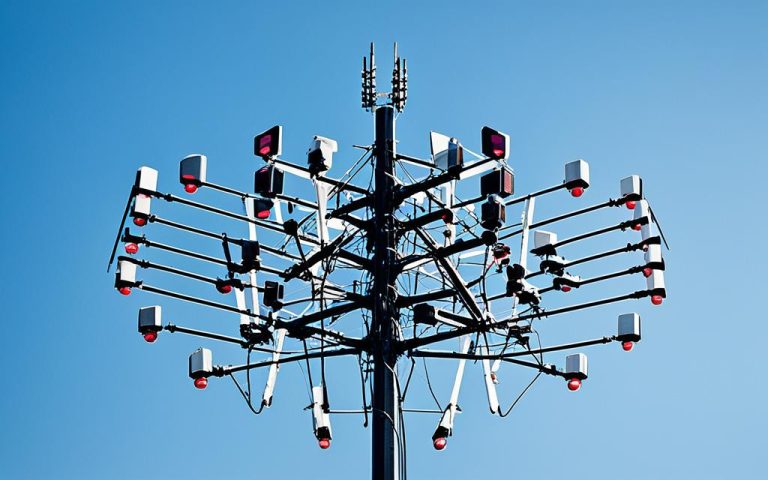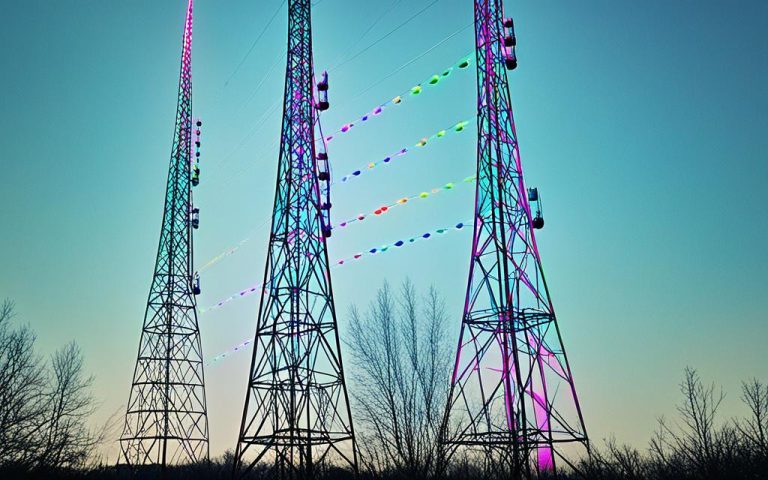Fixed wireless access (FWA) has emerged as a game-changer in the world of broadband connectivity. With the opening up of more spectrum in higher-frequency bands for 5G, mobile network operators (MNOs) are optimistic about the improved performance of FWA. However, to make the economics of FWA work, telcos need to have a solid plan in place.
When it comes to expanding fixed wireless networks, scalability is key. MNOs need to identify the best locations for FWA deployment and design a broadband-at-home strategy that aligns with their network expansion plan. Understanding the different FWA plays and integrating them into their overall strategy can be invaluable for MNOs.
In this article, we will explore the strategies for scalable expansion of fixed wireless networks. We will delve into the revival of fixed wireless access, the design of a broadband-at-home strategy, the five FWA plays, the deployment process, and the future outlook for FWA.
The Revival of Fixed Wireless Access
Historically, Fixed Wireless Access (FWA) suffered from slow speeds and poor reliability as it relied on the residual capacity of existing 3G or 4G mobile networks. This often led to underestimated data consumption and subpar service quality, resulting in mixed reviews for FWA offerings. However, significant advancements in spectrum bands, customer premises equipment, and technology and network topology have reinvigorated FWA as a viable broadband solution.
The availability of new spectrum bands, such as the C-band and mmWave spectrum, has significantly increased the capacity and speed of FWA. This allows for more efficient and reliable data transmission, addressing the limitations faced by earlier iterations of FWA. Additionally, customer premises equipment options have evolved, offering self-installed indoor or outdoor antennas, making installation more convenient for users.
In recent times, there has been a rise in FWA-focused attackers, who are building purpose-built networks optimized specifically for FWA. These new players pose competition to traditional Mobile Network Operators (MNOs) by offering enhanced performance and improved economics in FWA deployments.
“The availability of new spectrum bands and advancements in customer premises equipment have revitalized the potential of Fixed Wireless Access.”
To better understand the advancements in FWA, let’s explore the developments across spectrum bands, customer premises equipment, and technology and network topology:
Spectrum Bands
The introduction of new spectrum bands has been instrumental in bolstering FWA capabilities. The C-band and mmWave spectrum, with their higher frequency ranges, provide increased capacity and faster speeds. This enables FWA to deliver improved broadband connectivity to end users, bridging the gap between wired and wireless internet access.
Customer Premises Equipment
FWA now offers a range of customer premises equipment options that cater to different user requirements. Users can choose between self-installed indoor or outdoor antennas, depending on their specific needs and preferences. This flexibility in equipment installation enhances the overall user experience and simplifies the deployment process.
Technology and Network Topology
The technology and network topology of FWA have undergone significant advancements. These improvements have resulted in better network reliability, reduced latency, and improved coverage. The enhanced network topology ensures efficient data transmission, enabling FWA to provide reliable and high-speed internet access to fixed locations.
| Advancements | Description |
|---|---|
| New Spectrum Bands | Introduction of C-band and mmWave spectrum for increased capacity and speed. |
| Customer Premises Equipment | Options for self-installed indoor or outdoor antennas for convenient installation. |
| Technology and Network Topology | Improved network reliability, reduced latency, and enhanced coverage. |
Designing a Broadband-at-Home Strategy
Fixed wireless access (FWA) has emerged as a viable alternative in areas where traditional fixed-line infrastructure, like fiber, is uneconomical or slow to deploy. While fiber offers the fastest and most reliable internet access, its economics are only feasible in areas with significant average revenue per user (ARPU) and population density. In such cases, FWA can be a suitable solution to bridge the connectivity gap.
When designing a broadband-at-home strategy, mobile network operators (MNOs) must carefully consider various factors, including:
- Locations: Identifying suitable areas where FWA can complement or replace fiber infrastructure.
- Customer Affluence and Behavior: Understanding the demographics and digital behavior of potential FWA subscribers to gauge market demand.
- Competing Infrastructures: Evaluating the presence and effectiveness of competing network infrastructures to determine the viability of FWA deployment.
MNOs should prioritize their fiber versus FWA rollouts based on these factors to achieve optimal results.
Comparing FWA and Fiber in Different Locations
A detailed modeling of the mobile and fixed networks is essential for evaluating the business case for FWA and fiber in different locations. By conducting thorough assessments, MNOs can make informed decisions about the most appropriate broadband solution for each area.
| Criteria | FWA | Fiber |
|---|---|---|
| Speed and Reliability | Varies based on signal strength and network congestion | Consistently high-speed and reliable |
| Economics | Cost-effective in areas where fiber infrastructure is unfeasible | Requires significant ARPU and population density to justify investment |
| Deployment Time | Rapid installation, minimal physical infrastructure required | Time-consuming trenching and extensive cabling |
| Scalability | Can be easily expanded and upgraded incrementally | May require substantial infrastructure updates for expansion |
| Regulatory and Permit Requirements | Fewer regulatory hurdles compared to wired connections | May involve complex permits and approvals |
Based on the above comparison, MNOs can determine the most suitable infrastructure for each location. FWA excels in areas where fiber is impractical or economically unviable, offering a cost-effective alternative to deliver broadband connectivity.
“The integration of FWA into a broadband-at-home strategy can be a valuable tool for MNOs and should be part of their overall network expansion plan.”
The Five FWA Plays
When it comes to Fixed Wireless Access (FWA), mobile network operators (MNOs) have five distinct strategies they can employ to capture value and stay ahead in the market. These plays offer different approaches to FWA deployment, each with its own advantages and considerations.
Piggybacking
In this play, MNOs leverage existing multipurpose mobile networks to provide FWA services. By piggybacking on an existing network infrastructure, MNOs can quickly enter the FWA market and reach a wider customer base. This approach allows for relatively low deployment costs and efficient utilization of existing resources.
Dedicated Networks
Dedicated networks are purpose-built FWA networks that are designed specifically to deliver high-performance wireless broadband services. These networks offer advantages such as optimized transceiver placement, expert installation of outdoor antennas, and custom-designed hardware and software. By investing in dedicated networks, MNOs can ensure a more specialized and seamless FWA experience for their customers.
Transceivers and Outdoor Antennas
Transceivers and outdoor antennas play a crucial role in FWA deployments, enabling the transmission and reception of wireless signals. MNOs can focus on optimizing transceiver technologies and improving outdoor antenna designs to enhance the speed, reliability, and coverage of their FWA networks. By investing in these key components, MNOs can deliver better connectivity and overall performance to their FWA customers.
Purpose-Built Networks
Purpose-built FWA networks are built from the ground up with a specific focus on delivering reliable and high-speed broadband services. These networks are optimized for FWA and eliminate the limitations of repurposed infrastructures. Purpose-built networks provide MNOs with greater control over the network architecture, allowing for customized hardware and software solutions that are tailored to the unique requirements of FWA. By investing in purpose-built networks, MNOs can achieve better economics and compete effectively in the FWA market.
Value Capture
The value capture play involves MNOs strategically positioning themselves in the FWA market to maximize their revenue potential. This can include offering value-added services, partnering with content providers, or exploring innovative business models that go beyond traditional connectivity offerings. By identifying and capturing additional value streams, MNOs can differentiate themselves in the market and create new revenue opportunities.
To summarize, the five FWA plays provide MNOs with a range of options for FWA deployment and value creation. Whether it’s piggybacking on existing networks, building dedicated purpose-built networks, optimizing transceivers and outdoor antennas, or focusing on value capture, MNOs can leverage these plays to meet the evolving needs of their customers and stay competitive in the FWA landscape.

Fixed Wireless Access Deployment
Fixed Wireless Access (FWA) deployment offers numerous advantages over traditional wired connections, including lower costs, rapid installation, adaptability, and scalability. By eliminating the need for extensive physical infrastructure such as trenching and underground cabling, FWA presents a more cost-effective option for broadband connectivity.
Installation of FWA involves mounting an antenna or receiver on the exterior of a building, which is a quick and straightforward process that does not require extensive technical expertise. This rapid installation ensures accelerated deployment timelines, enabling users to enjoy high-speed internet access in a shorter period.
One of the key benefits of FWA is its adaptability and scalability. FWA technology allows for easy expansion and incremental upgrades, catering to the evolving needs of users and accommodating increased data demand. Whether it’s the addition of new users or the introduction of advanced services, FWA can efficiently scale to meet these requirements.
Furthermore, FWA deployment often involves fewer regulatory and permit requirements compared to wired connections. This streamlined process enables swift infrastructure development and reduces the complexities associated with obtaining necessary approvals, allowing for agile infrastructure development.
In summary, FWA deployment offers a cost-effective and efficient alternative to traditional wired connections. Its rapid installation, adaptability, and scalability make it a valuable solution for bridging connectivity gaps and providing reliable high-speed internet access to both urban and rural areas.
| Advantages of FWA Deployment | Benefits |
|---|---|
| Lower Costs | – Eliminates the need for extensive physical infrastructure – Reduces deployment expenses |
| Rapid Installation | – Quick and straightforward process – Does not require technical expertise |
| Adaptability and Scalability | – Easily expandable and upgradable – Accommodates increased data demand |
| Agile Infrastructure Development | – Involves fewer regulatory and permit requirements – Enables swift infrastructure development |
Conclusion
Fixed wireless access (FWA) has emerged as a transformative broadband platform, offering scalable expansion and improved broadband connectivity. By leveraging advancements in 4G and 5G technologies, spectrum bands, and wireless equipment, FWA can deliver high-capacity wireless signals to fixed locations. With its lower deployment costs, robust security features, and adaptability, FWA is well-positioned to meet the growing demand for high-speed broadband internet access.
As governments provide subsidies and implement policies to promote FWA deployment, competition in the market is increasing. FWA is not limited to rural communities; mobile operators can also leverage existing infrastructure to provide FWA services. This technology plays a crucial role in bridging the digital divide, bringing reliable connectivity to both urban and rural areas.
The future of FWA looks promising, as it continues to evolve and enhance broadband connectivity. With its scalability and ability to deliver high-speed internet access, FWA allows for the seamless expansion of network coverage. It is a cost-effective solution that provides an alternative to traditional fixed-line infrastructure and promotes greater broadband accessibility for all.
FAQ
What is fixed wireless access (FWA)?
Fixed wireless access (FWA) is a broadband platform that uses wireless technology to deliver high-capacity internet signals to fixed locations, providing an alternative to wired connections.
How does FWA differ from traditional fixed-line infrastructure like fiber?
FWA is typically used in areas where fiber is not available or economically feasible. Unlike fiber, FWA does not require extensive physical infrastructure and offers lower costs, rapid installation, adaptability, and scalability.
What are the advantages of FWA deployment?
FWA deployment offers advantages such as lower costs, rapid installation, adaptability, scalability, and fewer regulatory and permit requirements compared to wired connections.
What are the different FWA plays that mobile network operators (MNOs) can pursue?
MNOs have five distinct plays they can pursue for FWA, ranging from piggybacking off existing mobile networks to building dedicated purpose-built FWA networks, each with its own advantages and value capture potential.
Where is FWA most prevalent?
FWA is most prevalent in areas where traditional fixed-line infrastructure, such as fiber, is uneconomical or slow to deploy.
How does FWA integrate into a broadband-at-home strategy?
FWA can be integrated into a broadband-at-home strategy as a valuable tool for MNOs, allowing them to expand their network and provide reliable internet access to both urban and rural areas.



















